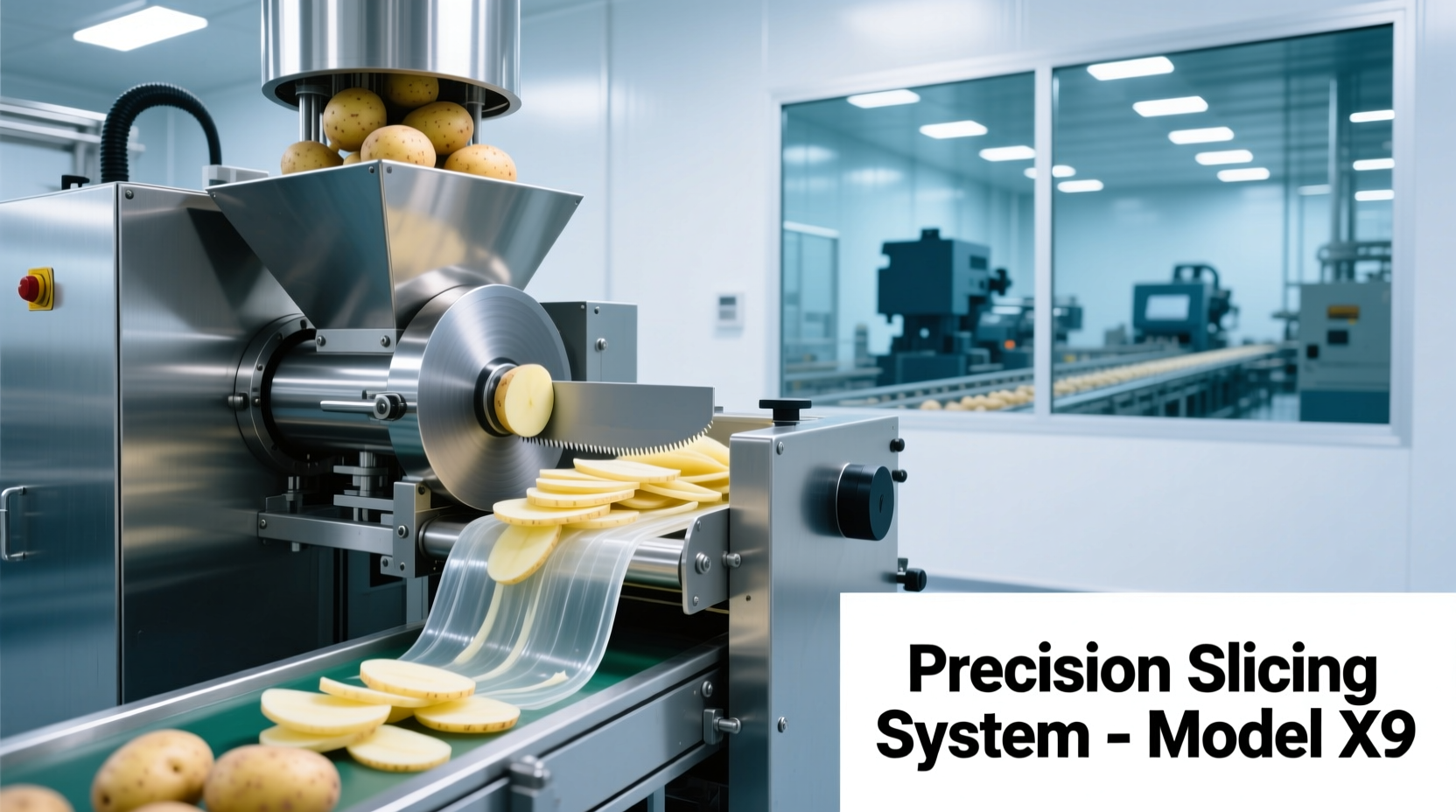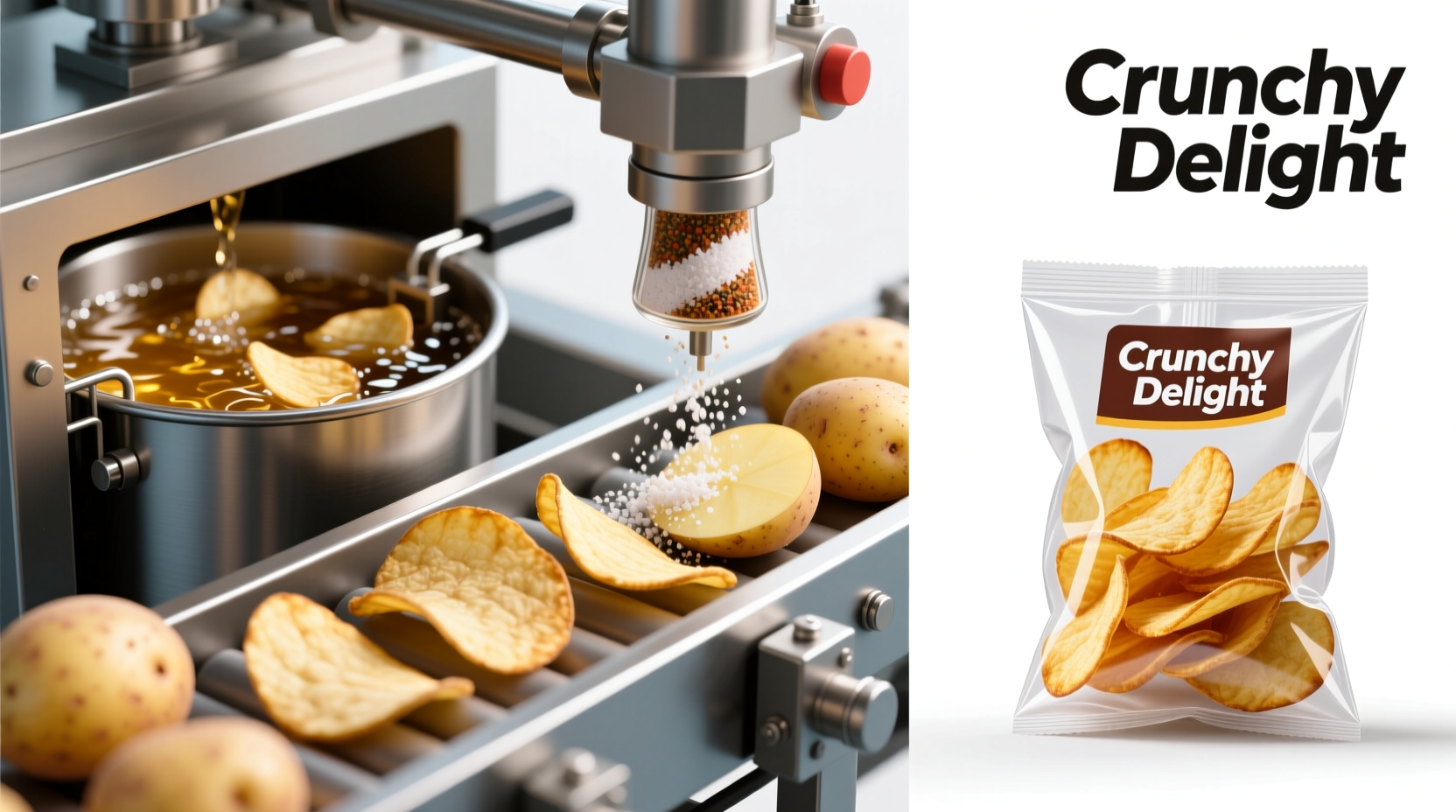The Complete Journey of Potato Crisps From Field to Bag
Ever wondered how those perfectly crisp, uniformly golden potato chips end up in your snack bag? The commercial production of potato crisps combines agricultural science, precise engineering, and food chemistry to deliver consistent quality at massive scale. Understanding how are potato crisps made reveals why factory-produced versions differ significantly from homemade versions in texture, flavor consistency, and shelf life.
Why Commercial Crisp Production Differs From Homemade
While you might slice potatoes thin and fry them at home, commercial potato crisp manufacturing process operates on an entirely different scale and precision. Major manufacturers produce up to 9,000 pounds of crisps per hour using specialized equipment that maintains exact temperature control, slice uniformity, and flavor distribution impossible to replicate in home kitchens.
Potato Selection: The Foundation of Quality Crisps
Not all potatoes make good crisps. Manufacturers exclusively use high-starch varieties like Russet Burbank, Shepody, or Innovator potatoes. These varieties contain 18-22% dry matter (compared to 14-16% in waxy potatoes), which is crucial for achieving the perfect crisp texture without excessive oil absorption.
According to the USDA Agricultural Research Service, starch content directly impacts crisp quality: "Potatoes with higher dry matter content produce crisps with lower oil content and better texture attributes" (USDA ARS, 2023).

Step-by-Step Commercial Production Process
1. Washing and Preparation
Raw potatoes undergo thorough washing in rotating drum scrubbers to remove dirt and stones. Advanced facilities use optical sorters that detect and remove defective potatoes based on color, shape, and surface blemishes before processing begins.
2. Peeling Techniques
Unlike home preparation, commercial facilities primarily use steam peeling (90-95 psi steam for 30-90 seconds) rather than mechanical peelers. This method removes only 3-5% of the potato weight as waste compared to 10-15% with mechanical peelers, preserving more usable product.
3. Precision Slicing
The heart of how potato chips are made in factories lies in the slicing stage. High-speed rotary cutters slice potatoes at 0.04-0.08 inches (1-2 mm) thickness with remarkable consistency. Laser-guided systems monitor slice thickness in real-time, adjusting blade position thousands of times per minute to maintain uniformity.
4. The Critical Frying Process
Freshly sliced potatoes enter continuous fryers filled with refined vegetable oil (typically sunflower, canola, or corn oil) maintained at 350-375°F (175-190°C). The frying duration (2-5 minutes) is precisely calibrated based on slice thickness and moisture content. Modern systems use multi-zone frying with progressively higher temperatures to optimize texture development while minimizing oil absorption.
| Production Stage | Commercial Method | Home Method | Key Difference |
|---|---|---|---|
| Slicing | Laser-guided rotary cutters (0.04-0.08") | Manual mandoline (inconsistent) | Commercial achieves uniform thickness critical for even cooking |
| Frying Temp | Precisely controlled 350-375°F | Variable home stove temperatures | Commercial maintains exact temperature for optimal texture |
| Seasoning | Computer-controlled flavor applicators | Manual shaking in bag | Commercial ensures precise 1.5-2.5% flavor coating |
| Oil Quality | Continuous filtration & monitoring | Single-use oil | Commercial maintains oil chemistry for consistent flavor |
Flavor Application Science
The potato crisp seasoning process represents one of the most technologically advanced stages. After frying and draining, crisps pass through flavor applicators that precisely control:
- Temperature (typically 140-160°F/60-70°C for optimal adhesion)
- Flavor concentration (1.5-2.5% by weight)
- Particle size distribution (critical for even coating)
- Application timing (within 30 seconds of exiting fryer)
Major manufacturers use proprietary systems like the "Fluid Bed Seasoning" technique where crisps tumble through a cloud of seasoning particles while warm air ensures even distribution without clumping.
Quality Control Throughout Production
Rigorous quality checks occur at multiple stages of the potato crisp production line steps:
- Moisture testing: Finished crisps must contain 1.5-3.0% moisture for optimal crispness
- Color measurement: Spectrophotometers ensure consistent golden color (L* value 60-75)
- Texture analysis: Force testing measures break strength (typically 50-150 grams)
- Oil content: Target range of 30-38% oil by weight
The European Snack Association reports that modern facilities employ over 200 quality checkpoints per production line, with automated systems rejecting products that fall outside strict parameters (ESA, 2024).
Packaging for Maximum Freshness
The final stage of how are potato crisps made involves specialized packaging that preserves freshness. Modern bags use multi-layer materials with:
- Nitrogen flushing (replacing oxygen with 99.5% pure nitrogen)
- Moisture barriers to prevent sogginess
- Light-blocking layers to prevent flavor degradation
- Anti-static properties to prevent seasoning from settling
This packaging technology extends shelf life to 8-12 weeks while maintaining crispness and flavor integrity—something impossible with standard plastic bags.
Evolution of Crisp Manufacturing
The commercial potato crisp manufacturing process has evolved dramatically since 1853:
- 1853: First recorded crisp creation by chef George Crum in New York
- 1920s: Introduction of wax paper bags for commercial sales
- 1950s: Development of continuous frying systems
- 1970s: Nitrogen flushing technology introduced
- 1990s: Computer-controlled flavor application systems
- 2010s: Real-time quality monitoring with AI vision systems
What Home Cooks Should Know
If you're attempting to replicate the professional frying methods for crisps at home, understand these key limitations:
- Home fryers cannot maintain the precise temperature stability of commercial systems
- Manual slicing lacks the uniformity critical for even cooking
- Home environments lack the controlled humidity of factory settings
- Small batch production prevents the oil chemistry stabilization that occurs in continuous commercial frying
For best home results, use a mandoline for consistent slices, maintain oil temperature with a thermometer, and season immediately after draining while still warm.
Conclusion: Precision Behind the Perfect Crisp
The journey from raw potato to packaged crisp involves sophisticated technology and precise control at every stage. Understanding how potato chips are made in factories reveals why commercial products achieve such remarkable consistency in texture, flavor, and shelf life. While homemade versions have their charm, the industrial potato crisp production line steps represent decades of food science refinement focused on delivering that perfect crunch in every bag.











 浙公网安备
33010002000092号
浙公网安备
33010002000092号 浙B2-20120091-4
浙B2-20120091-4